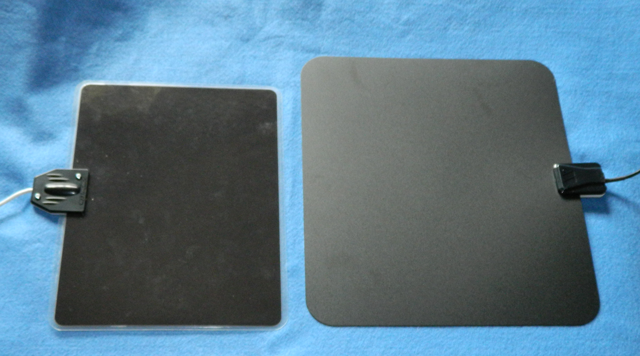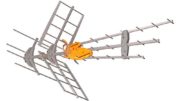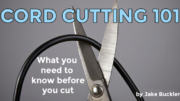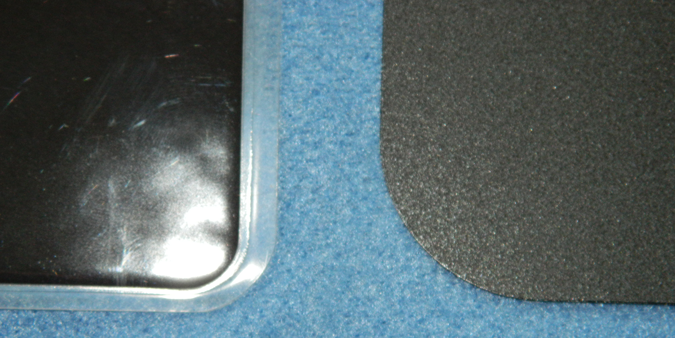
Let’s get down to it. We’ve talked about the Winegard Flatwave and Mohu Leaf for about a week. The Mohu Leaf, shown at left, is a little smaller but a little thicker. It has a fully laminated outside edge; that’s good or bad depending on whether you think it looks like a Trapper Keeper. The Winegard Flatwave, at right, is a little bigger with a slight texture to its plastic body. Really they look pretty much identical unless you’re geeky enough to look closely (as I am.)
I opened up both antennas and I saw that the Mohu Leaf was soldered together but that the parts were very flimsy. As I pointed out in the comments for the previous article I think solder would be better in a perfect world but not when it’s so weak. The Winegard FlatWave was screwed together, with the contacts being held together by pressure. Even though oxidation could ruin the connection fairly easily, I still gave points to the Winegard FlatWave for being a more durable product.
Now it’s time to find out where both antennas rate. Testing conditions were designed to give no advantages either way. The Mohu Leaf specifically says that it will not pick up VHF signals so I plan on only measuring UHF signals. Because of a comment on the last article, I’m going to revise my testing criteria to see if either antenna is better than a plain monopole. I’m also going to see if either antenna is as good as a roof-mounted aerial.
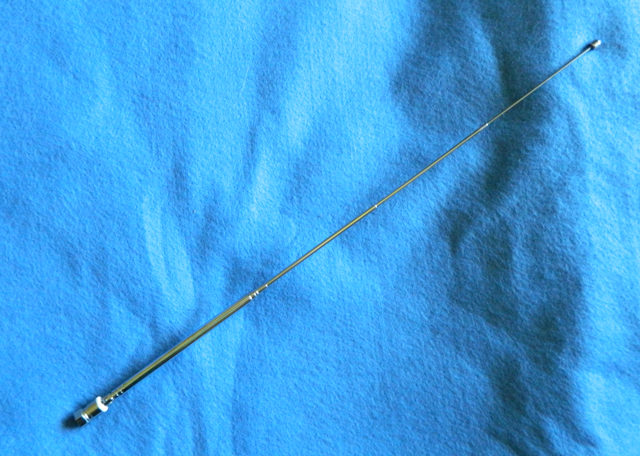
I stole this monopole off a portable emergency TV I have. It’s not that impressive in person.
I guess I really didn’t know what to expect here. The Mohu Leaf is everyone’s favorite, well reviewed and popular. The Winegard Flatwave is from a really established company. Let’s take a look at what I found.
Number of Channels Acquired
I ran the autoscan routine on my TV, then took out VHF and analog channels. Neither antenna is rated for these. I only counted major channels (not subchannels) and I did not give credit for any channel that showed any pixelation after 30 seconds of watching.
| Channels Acquired | ADVANTAGE | |
| Basic Monopole | 4 | |
| Mohu Leaf | 6 | |
| Winegard FlatWave | 9 | WINNER |
| Roof-mounted Antenna | 13 |
Average Signal Strength
This was a time-consuming test. I used the signal meter on my TV, which probably isn’t very accurate, to measure only the channels that came in on each antenna. I did not measure signal on a channel that I didn’t count. I don’t know what these numbers mean except that it’s pretty clear that 0 is no signal and 100 is perfect signal. I then averaged all the numbers together to get one number that represents average signal strength.
| Signal Strength | ADVANTAGE | |
| Basic Monopole | 57 | |
| Mohu Leaf | 69 | WINNER |
| Winegard FlatWave | 66 | |
| Roof-mounted Antenna | 83 |
So there you have it. Utterly meaningless results. The Mohu Leaf gets a lot fewer channels but on the channels it does get, it averages out a little better. I guess the numbers aren’t going to tell me anything.
Which… leaves me with subjective results. So here they are.
1. The Mohu Leaf doesn’t get ABC or FOX. Both antennas scored well on the UHF channels but in my market ABC and FOX are on VHF-High. The Winegard FlatWave had no problem getting both.
2. The Winegard FlatWave has a black cord. This may seem like a stupid consideration but I did care for the cable on the Mohu Leaf better. Most walls are white, not black.
3. The Mohu Leaf just doesn’t seem well put together. I’m sorry to say it but I’ll call it as I see it. The WineGard FlatWave seemed like a well-made piece of hardware while the Mohu Leaf was flimsy.
I set out to do a scientific analysis and in the end I came up with this: The antenna has to work for you. The Winegard Flatwave delivered more channels, it seemed better built and it costs less. Unlike other comparison tests I’ve read, I saw both antennas perform much better than a monopole antenna.
The numbers may be a bit dodgy but for a lower price, you can have a FlatWave with better performance. I guess that’s the end of the story.

